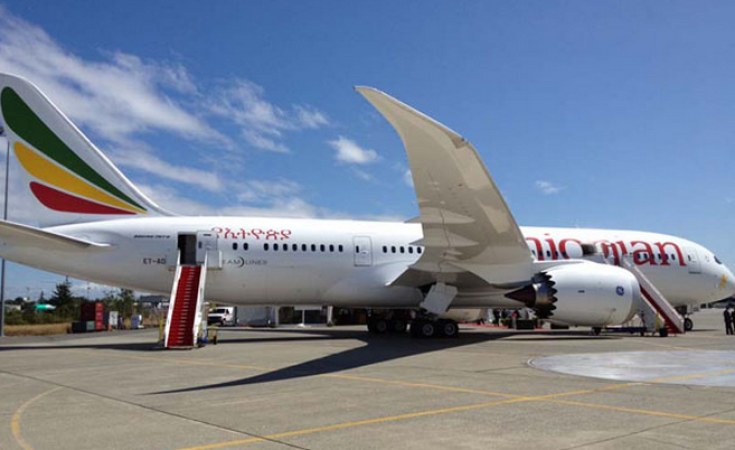After more than three months of suspension, Ethiopian Airlines resumed its Boeing 787 Dreamliner service over the weekend with a successful flight from Addis Ababa to Nairobi.
Ethiopian Airlines flight 801 marked the first time a commercial Dreamliner has flown since January 17th, when several battery-related incidents on Dreamliners owned by Japanese carriers prompted the United States Federal Aviation Authority (FAA), the Ethiopian Civil Aviation Authority and regulators around the world to ground the aircraft.
On April 25, the FAA officially approved a battery re-design plan proposed by the Boeing Company, and cleared all Dreamliners for flight pending the implementation of the fix. Ethiopian and Boeing engineers then set to work on the airline's four-strong fleet of Dreamliners, successfully completing the approved modifications designed to prevent the aircraft's lithium-ion batteries from overheating and burning out.
Ethiopian Airlines Chief Executive Officer Tewolde Gebremariam, who was a passenger on flight 801, said, "We are excited to resume our service with the Dreamliners," and despite the battery malfunctions, Gebremariam remarked that the airline has been "very pleased" with the performance of its Dreamliner fleet.
At a ceremony held at Dulles International Airport in Virginia last August, Ethiopia Airlines became the first commercial carrier outside of Japan to officially receive a Boeing 787 Dreamliner. Today, the African airline is one of eight commercial carriers in the world to fly the aircraft.
The mid-sized 787 Dreamliner is the Boeing Company's most advanced passenger jet and is seen as a game changer in the aviation industry. The plane is made entirely of composite materials that make it significantly lighter than other similarly sized aircraft.
Its lightweight translates to a 20-percent reduction in fuel costs and means that the plane has a longer range than other mid-size jets, said Tim Neale, a senior communications director at the Boeing Company, while giving journalists a tour of the aircraft at the Ethiopian Airlines ceremony in August. "Existing long-range airplanes like a 747, or even a triple seven (777) are maybe too big for the route," he said. "This is smaller than the two of those, so it will open up a lot of new routes."
Some of the plane's other features include spacious cabin seating, a centrally controlled window tinting system, as well as increased cabin pressure, a feature which Neale says is designed to mitigate feelings of drowsiness and fatigue that are typically associated with long flights.
Ethiopian Airlines was established in 1945 and currently operates flights to 86 cities throughout the world. The government-owned company is Africa's fastest growing airline and is the only African airline to operate the 787 Dreamliner.


